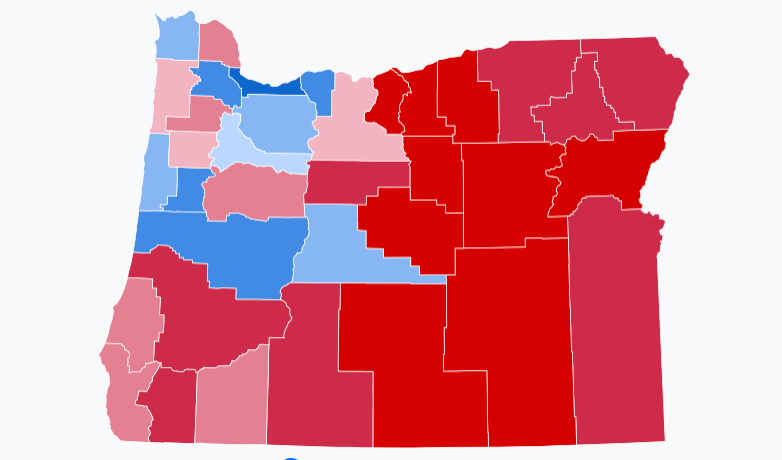Journalist and former Today host Ann Curry once said her native Oregon had the country's most far-left and far-right voters, and indeed, there is a lot of truth in that.
Oregon, however, is known as a “blue state.” It has voted Democratic for president in every election since 1988 and in all but one statewide election since 2002. Democrats have had total control of the state government in Salem since 2007. Although Republicans managed to pick up a House seat in 2022 thanks to reapportionment adding a sixth district – the first time they’ve held more than one House seat in Oregon since 1996 – they are unlikely to keep it this year. However, Oregon also has pockets of arch-conservative, far-right voters who, despite being unable to win statewide, wield a lot of influence on the local level. Generally speaking, the state’s politics is divided by the Cascade Mountains, with the area west of the mountains voting Democratic and Republican dominating the sparsely-populated area east of the mountains.
Oregon was once a Republican bastion. During the New Deal Era, it was one of the few states that elected Republicans to the US Senate throughout the 1930s; one of them was Charles McNary, who led the GOP’s small Senate caucus and was Republican Wendell Willkie’s running mate in the 1940 presidential election.
Oregon’s shift to the Democrats began in the 1950s, when Portland, with other West Coast cities like San Francisco and Seattle, became a haven for progressive politics. Progressivism in the state exploded during the Vietnam War when Republicans and Democrats found common ground in opposition to the conflict. Eugene, the state’s second-largest city and home to the University of Oregon, became a second liberal stronghold, and that coalition helped lift the Democrats in the state. Portland’s suburbs in Clackamas and Washington counties and Marion County, home to the state capital of Salem, remained GOP strongholds until the 1990s.
The state was considered competitive until Barack Obama won twice by double digits. Democrats have been able to hold on since. Trends in the state hint at a very different coalition for both parties than the one that existed through the 1990s and 2000s.
Keep reading with a 7-day free trial
Subscribe to Nick Rafter Writes to keep reading this post and get 7 days of free access to the full post archives.






